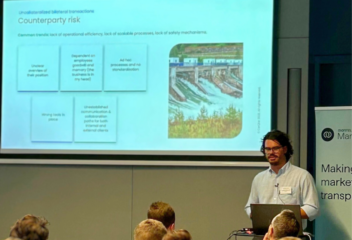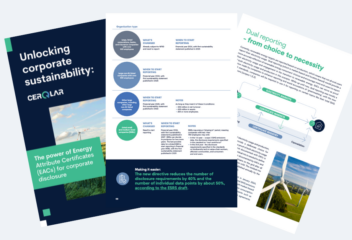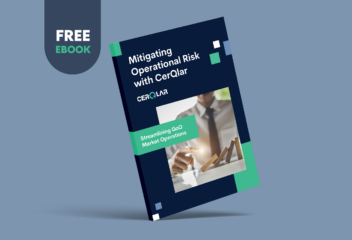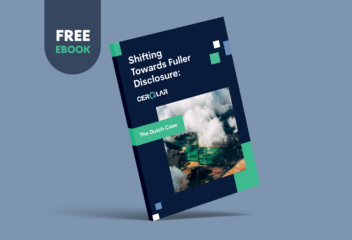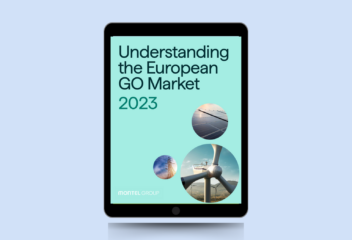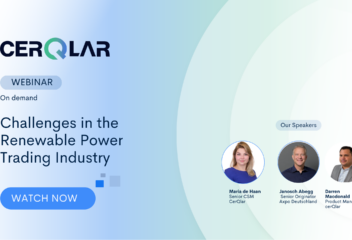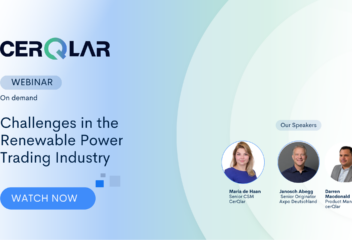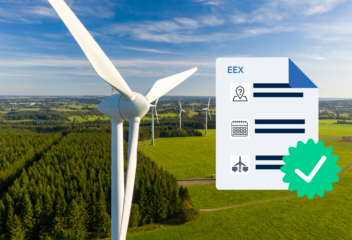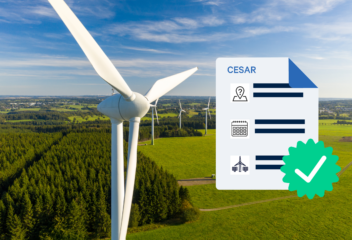How to trade energy attribute certificates
Renewable energy is undoubtedly one of the leading initiatives to reduce greenhouse gas emissions globally today. Green legislations and growing social awareness have increased the demand for renewable energy exponentially in recent years, and investors have begun to take notice of the industry’s economic potential. But tracking the source of energy is complex, and knowing which energy, and how much of it, originates from a renewable source is close to impossible – without EACs.
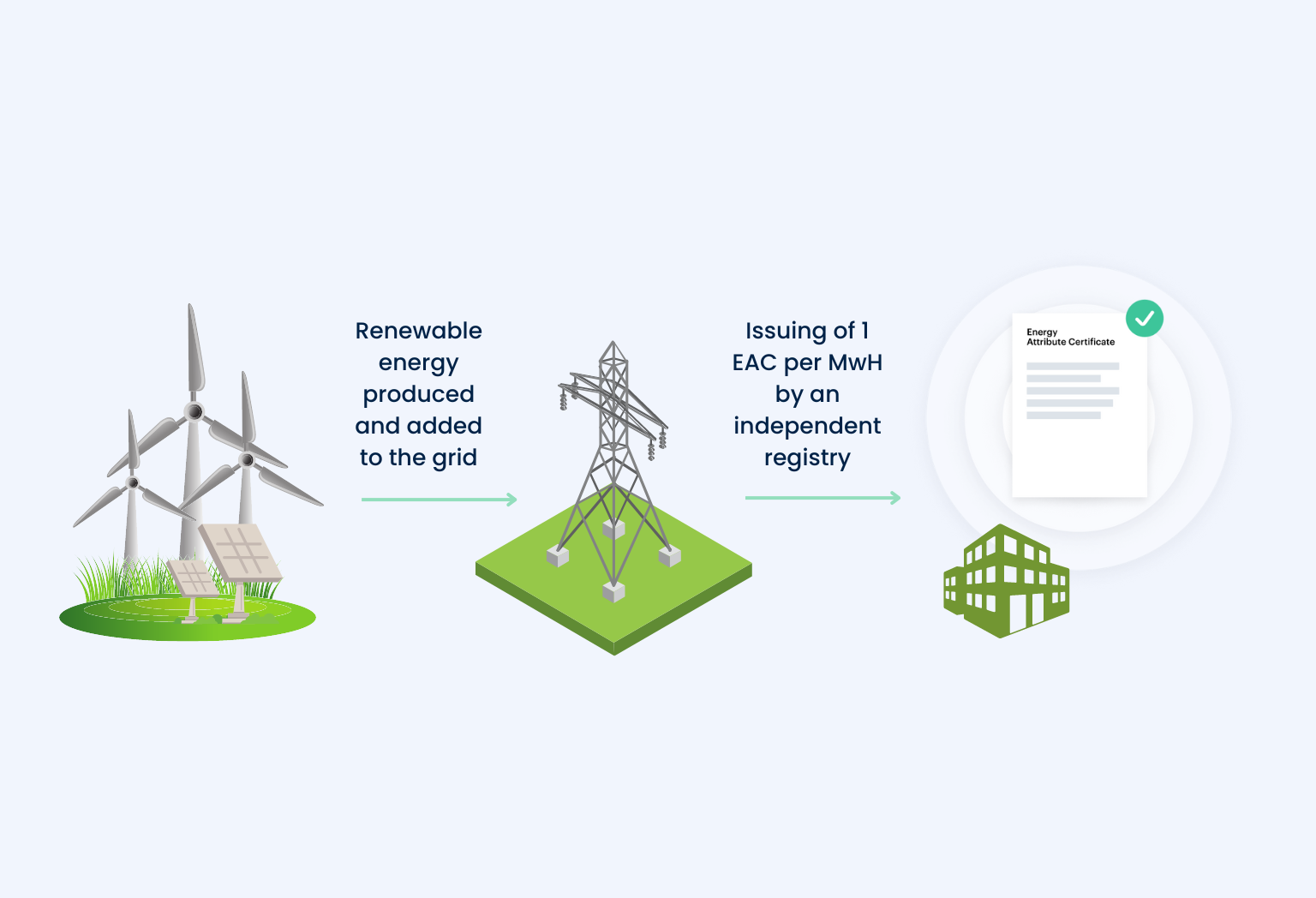
What are EACs?
EAC (energy attribute certificate) is an umbrella term for any official documentation that proves renewable energy consumption. Each EAC represents 1MWh (megawatt hour) of renewable energy that has been produced and added to the grid and is used to document and track the energy source it represents.
Some high-profile EACs include GOs (guarantees of origin) in Europe, and RECs (renewable energy certificates) in North America and a rising number of countries across Africa, Asia, Latin America, and the Middle East. EACs can be traded as an asset. Like any other assets, EACs are valued at the value consumers would pay for them. This means that as environmental awareness grows and more green legislations are passed, user demand increases along with the value of EACs.
The benefits of EACs
Trading EACs has become one of the most lucrative trades and investment opportunities around the globe and is likely only to continue its current trajectory of growth. Increasing social awareness and recent urgency to meet climate goals have driven up the demand for, and value of, green energy.
EACs create a traceable asset that transforms renewable energy into a tradeable asset. Statistics shared by the AIB (Association of Issuing Bodies) reveal that in Europe alone, the GO market has experienced significant and consistent growth for over a decade.
The consumer or energy producer that cancels (i.e., consumes, thereby removing it from the market) the certificate also benefits, as they get to claim a portion of their power use as renewable, making the industry beneficial both environmentally and economically. As the demand for green energy continues to rise and more countries adopt the EAC model, more certificates will enter into circulation, the industry will continue expanding, and EAC trading will become more lucrative.
So how does EACs trading work?
Renewable energy producers generate the original renewable energy, making them the first to originally receive the certificates when their power is sold on the wholesale market. Once a producer has received an EAC, it can be passed on to suppliers or traders when the energy is purchased. The ability to trade certificates not only creates new financial opportunities but also gives consumers a hand in directly impacting the global transition to green energy.
EACs are traded through registries, so once a producer receives an EAC, it is registered in a particular registry, which generally varies based on geographic location. Once it is in the registry, producers and traders can transfer ownership to other registry participants. It’s important to note that the EAC trade process can vary based on geographic location, the registry used, and relevant national laws.
Different trading systems operate in distinct ways and often don’t communicate or allow trading with each other, which can make cross-border trading challenging. Since most EU EAC producers, issuers, and traders follow the same EECS (European Energy Certificate Standard), transferring certificates across countries in the EU is easier than in less mature markets, such as Africa, South and Central America, and the Middle East, but that doesn’t mean that the trading process doesn’t have its challenges.
Post-trade challenges
While the trade process can mostly be managed through registries, keeping track of current and future trades can be difficult. As the EAC market becomes more dynamic, following the trade lifecycle has left market participants floundering to keep up. Especially as the market evolves and trades become more complex and intricate and stretch across various registries, tracking certificates can be extremely challenging. Registries can only keep track of the inventory stored in that particular registry, leaving market participants unable to get a full view of their portfolio when working across more than one registry.
Until recently, market participants could rely on generalized tools such as spreadsheets to manually track their inventory and trades. But as the market expanded, constantly updating spreadsheets is impractical. The complexity of modern trading means that transcribing trades manually leaves EAC market participants at risk of error and inaccuracy. Additionally, the increasing demand for green energy means that the market will continue to grow for the foreseeable future. Without the infrastructure to support this growth, environmental workflow challenges will become harder to manage until traders can no longer scale up with the market, which will force the EAC market to a standstill.
Technological infrastructure is a necessity, not a luxury
The fact that the EAC market is growing is indisputable. Still, for market participants to enjoy the advantages of this growth, technological infrastructure that provides them with sustainable and scalable support needs to be established quickly.
Other growing industries in the past, such as the financial industry, experienced a gradual growth trajectory that made it possible for infrastructure to develop alongside the trade market. As meeting sustainability goals becomes a higher priority, and green social awareness increases, EAC traders must learn how to adapt and navigate the growth of the EAC market. For this to be possible, traders need reliable technological support to allow them to continue to trade EACs in a dynamic market.
Simplify your environmental certificates workflow with Cerqlar
Reviewing the trade lifecycle reveals that many of the challenges at risk of stalling the market are centered around the post-trade environmental workflow. Automating as much of this stage as possible with a technological solution like CerQlar can streamline the workflow and the entire process, enabling larger, more complex trades and supporting EAC market growth.

Automate your trade process with CerQlar. Get in touch with us or schedule a demo today to see what CerQlar can do for you.
Book a discovery callCerQlar transforms your post-trade experience by automating its most challenging aspects. For example, CerQlar will automatically capture all your trade details, create a contract template, let you view inventory changes, allocate energy attribute certificates for future trades, and much more. Automating your environmental workflow allows you to trade larger quantities of energy attribute certificates with ease and efficiency and keep up with current and future market growth.



